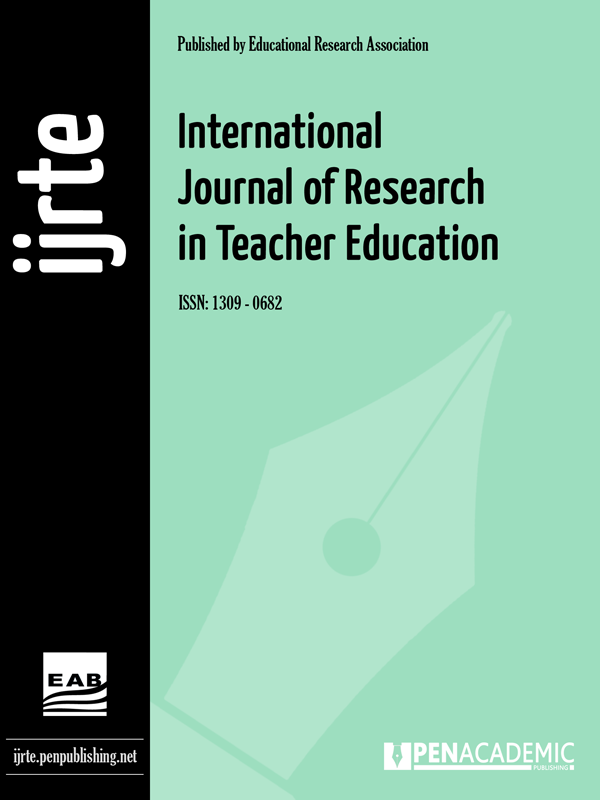Research article | Open Access
International Journal of Research in Teacher Education 2022, Vol. 13(3) 56-66
A Study on Teaching Intonation Patterns in English from EFL Teachers' Perspectives
pp. 56 - 66
Publish Date: September 26, 2022 | Single/Total View: 307/632 | Single/Total Download: 888/1.196
Abstract
Intonation is such a complex system that each language has its distinctive patterns. Although intonation has an inevitable position in language teaching, most of the non-native teachers are unaware of its prominent role in English language teaching (ELT). Therefore, this paper aims to raise awareness about the significance of English intonation by revealing the views of English as a foreign language (EFL) teachers on teaching stress and intonation in terms of teaching setting, materials and to what extent the patterns of English intonation is integrated in English courses. The study also investigates the English language skills for which EFL teachers find relatively more useful when teaching intonation patterns in English. With this goal in mind, quantitative methodology was followed. Purposeful sampling was adopted and 222 English teachers participated in the study. An online questionnaire, which consisted of two sections, was administered through Google Forms document to elicit EFL teachers' responses in the 2019-2020 academic term in Biga district of Çanakkale. The data was analysed statistically using SPSS data editor. The findings indicated that teaching setting and materials are insufficient to teach intonation patterns in English, and that the vast majority of EFL teachers do not touch upon intonation patterns in English classrooms.
Keywords: Intonation, stress, English as a foreign language (EFL) teachers, English classrooms
APA 7th edition
Kuru, M.E. (2022). A Study on Teaching Intonation Patterns in English from EFL Teachers’ Perspectives . International Journal of Research in Teacher Education, 13(3), 56-66.
Harvard
Kuru, M. (2022). A Study on Teaching Intonation Patterns in English from EFL Teachers’ Perspectives . International Journal of Research in Teacher Education, 13(3), pp. 56-66.
Chicago 16th edition
Kuru, Mehmet Emrah (2022). "A Study on Teaching Intonation Patterns in English from EFL Teachers’ Perspectives ". International Journal of Research in Teacher Education 13 (3):56-66.
- Bolinger, D. (1989). Intonation and its uses. California: Stanford University Press. [Google Scholar]
- Bradford, B. (1988). Intonation in context. Cambridge: Cambridge University Press. [Google Scholar]
- Brown, G. (1977). Listening to spoken English. Essex: Longman. [Google Scholar]
- Celce-Murcia, M., Brinton, D. M., & Goodwin, N. (1996). Teaching pronunciation: A reference for teachers of English to speakers of other languages. Cambridge: Cambridge University Press. [Google Scholar]
- Chun, D. (1988). The neglected role of intonation in communicative competence and proficiency. Modern Language Journal, 72(3), 295–302. [Google Scholar]
- Cruttenden, A. (1986). Intonation. Cambridge: Cambridge University Press. [Google Scholar]
- Çelik, M. (1999). Learning stress and intonation in English. Ankara: Gazi Kitabevi. [Google Scholar]
- Demirezen, M. (1986). Phonemics and phonology: Theory through analysis. Ankara: Bizim Büro Basımevi. [Google Scholar]
- Demirezen, M. (2009). An analysis of the problem-causing elements of intonation for Turkish teachers of English. Procedia-Social and Behavioral Sciences, 1(1), 2776–2781. [Google Scholar]
- Eisenson, J. (1965). The improvement of voice and diction (2nd ed.). New York: Macmillan. [Google Scholar]
- Finocchiaro, M. (1958). Teaching English as a second language. New York: Harper & Row. [Google Scholar]
- Hamad, P. I., & Muhammad, H. A. (2018). Teaching stress and intonation from students’ perspective. Al-Fatih Journal, 14(74). [Google Scholar]
- Kenworthy, J. (1987). Teaching English pronunciation. New York: Longman. [Google Scholar]
- Kreidler, C.W. (1989). The pronunciation of English: A course book in phonology. Oxford: Basil Blackwell. [Google Scholar]
- Ladefoged, P. (2006). Chapter 5: English words and sentences. In A course in phonetics (p. 107–132). Wadsworth, Cengage Learning. [Google Scholar]
- Lieberman, P. (1967). Intonation, perception and language. Cambridge: MIT Press. [Google Scholar]
- Paulston, C.B., & Bruder, M.N. (1976). Teaching English as a second language: Techniques and procedures. Boston: Little Brown. [Google Scholar]
- Roach, P. (1983). English phonetics and phonology (3rd ed.). Cambridge: Cambridge University Press. [Google Scholar]
- Robinett, B.W. (1978). Teaching English to speakers of other languages: Substance and technique. New York: McGraw Hill. [Google Scholar]
- Shepherd, J. (1995). Multilevel English grammar programme. Hertfordshire: Phoenix ELT. [Google Scholar]
- Taylor, L. (1993). Pronunciation action: Classroom techniques and resources. New Jersey: Prentice Hall. [Google Scholar]
- Tench, P. (1981). Pronunciation skills. Essential language teaching series. London: Macmillan. [Google Scholar]
- Tench, P. (1996). Intonation systems of English. New York: Author. [Google Scholar]
- Wijk, A. (1966). Rules of pronunciation for the English language. Oxford: Oxford University press. [Google Scholar]
- Woolard, G. (1993). Intonation matters: Modern English Teacher, 2(2), 57. [Google Scholar]
- Yıldız Çelik, Ö., & Kodan, H. (2020). Experiences of primary school teachers regarding to teaching Turkish to students who are not native Turkish speakers: A phenomenology. International Journal of Progressive Education, 16(6), 215–230. https://doi.org/10.29329/IJPE.2020.280.13 [Google Scholar] [Crossref]
